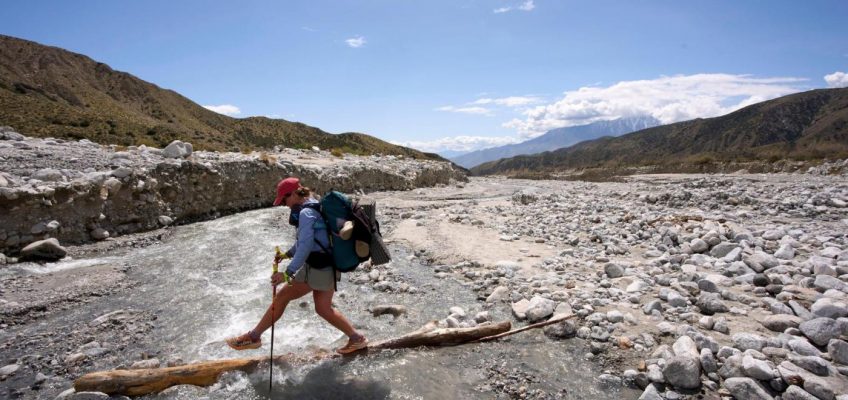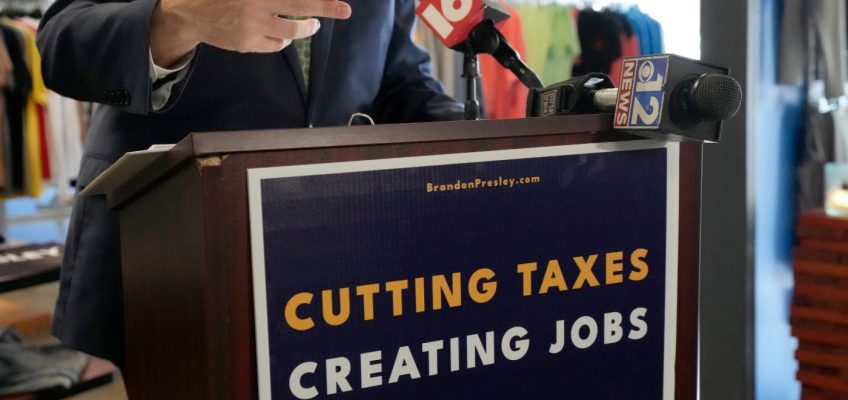By JULIE WATSON
CAMPO, Calif. (AP) — Hiking the Pacific Crest Trail is a challenge, especially for adventurers making the entire run from Southern California to Canada, and Eric Kipperman’s job is to greet them at the start and lay bare the difficulties ahead.
He has lately begun warning that the journey may be even tougher. Following cuts by the Trump administration, plans to clear downed trees and rebuild storm-battered stretches in 2025 have been scrapped.
“This year, we’re going to have less trail work done on the trails, so just know that going into your hike, safety is the most important thing,” Kipperman told a group of backpackers from Europe and the United States at the trailhead near Campo, California, an hour’s drive east of San Diego.
He cautioned there is “no trail” at all in parts of the 2,650-mile path through California, Oregon and Washington state.
The cutbacks are not just on the West Coast. Ahead of the busy summer hiking season, funding freezes and mass layoffs also are disrupting repairs on the East Coast’s Appalachian Trail after nearly 500 miles were damaged by Hurricane Helene, underscoring how President Donald Trump’s dramatic downsizing of the U.S. government is touching even the nation’s remote backcountry where vacationers, wanderers and escapists alike retreat to leave modern life behind.
Wildfires and more intense storms due in part to climate change have been taking a toll on the legendary trails. The federal cuts threaten their very existence, according to the Pacific Crest Trail Association and the Appalachian Trail Conservancy, which oversee their preservation in partnership with the government and receive millions in federal dollars.
The U.S. Forest Service called the situation “dynamic and evolving” in an email to The Associated Press, but said they are committed to ensuring public safety and access to recreation areas that are vital to local economies.
The Trump administration has let go some 3,400 workers at the U.S. Forest Service, and nearly 1,500 at the National Park Service, including trail repair specialists. The associations said the cuts also led to the rescinding of job offers for seasonal crews with technical skills to rebuild boardwalks, bridges and campsites and train thousands of volunteers.
Courts have ordered federal agencies to rehire thousands of workers, but some say they are not coming back.
“For hikers, they’re going to be crawling, navigating, working their way through downed trees across the trail that won’t get cut out,” said Justin Kooyman, director of the Pacific Crest Trail operations. “It’s going to make for a little more rough and tumble.”
A backlog of projects
While the trails are not in total disarray and many hikers may not see any damaged areas, maintenance is critical to their existence, the associations say. More than 20 miles (32 kilometers) of the Appalachian Trail remain closed following Helene and downed trees could fuel wildfires.
Last month, the Appalachian Trail turned 100 years old. The footpath stretches 2,193 miles between Georgia’s Springer Mountain and Maine’s Mount Katahdin.
Its founder, the late forest scientist Benton MacKaye, saw a need for a place to escape stress following the end of World War I and the 1918 flu epidemic.
The Appalachian Trail and Pacific Crest Trail officially became the country’s first National Scenic Trails under the 1968 National Trails System Act. Completing them has come to symbolize the strength of the human spirit, inspiring books and movies. Only a fraction are thru-hikers, a term for those who walk the trails from end to end. Many don’t succeed and several people have died trying. Most users hike for a day or two to enjoy the breathtaking beauty.
“I am so concerned with what seems to be a general lack of appreciation for what these protected outdoor spaces can bring to not just our physical well-being but to our souls,” said Sandi Marra, head of the Appalachian Trail Conservancy. “If we lose these things, we are really going to be lost as a species, and definitely as a country.”
The Pacific Crest Trail Association said it is operating with a third less federal grant money than anticipated. The Appalachian Trail Conservancy said at least $1.5 million is at risk from federal downsizing.
The National Park Service said its funding has continued for the Appalachian Trail as it works to “address challenges collaboratively and seek solutions” to support the footpath’s “enduring legacy.”
Both trails already had a backlog of projects. Wildfires have scorched nearly 250 miles of the Pacific Crest Trail in recent years.
The disruption exacerbates the deteriorating conditions and the spread of invasive plant species, which will ultimately increase costs, said Megan Wargo, head of the Pacific Crest Trail Association.
Cutting back
The Pacific Crest Trail crosses searing desert and traverses forests of giant sequoias, the world’s largest trees, before climbing by snow-covered peaks in the rugged Sierra Nevada. After snaking over 50 mountain passes, it ends in Washington’s remote Pasayten Wilderness at the Canadian border.
As the trail’s popularity grew through social media and the bestselling memoir “Wild” that inspired a Hollywood film, drawing less experienced backpackers, the association hired what they call “crest runners.”
Kipperman is one of two at the southern end. Their duties include greeting hikers at the Mexican border, checking their permits and providing safety tips before they set off. The crest runners normally work from March until August, covering the hottest, riskiest months for that section.
Last year, a crest runner also worked the northern end at the Canadian border. But this year they only will be at the southern end until mid-May unless more federal funds are unfrozen.
Kipperman, whose trail name is “Pure Stoke,” is infectiously cheery as he rattles off the dangers from rattlesnakes to dehydration and distributes bags for discarded toilet paper. He steers clear of discussing politics and instead talks about protecting water quality, burying human waste, packing out trash and building safe campfires.
“Remove the ego. Address the situation. See if going forward is really the right thing for you,” Kipperman said, warning hikers to beware that Mile 225 or so is washed out.
Plowing ahead
After hearing Kipperman’s spiel, backpacker Joshua Suran said he planned to try helping restore the trail where possible.
Marias Michel of Germany trudged over, concerned about the weight of his backpack draped with gear, water bottles and a pair of Crocs. After quitting his job, he said he needed to do the trail, calling it “a resetting, a big detox.”
He was aware of the federal cuts but said he couldn’t worry about that.
“I’m just going to be learning by doing because I don’t want to be too much up here,” Michel said, pointing to his head. “I want to test myself. No expectations. It’s an attempt until you make it.”




